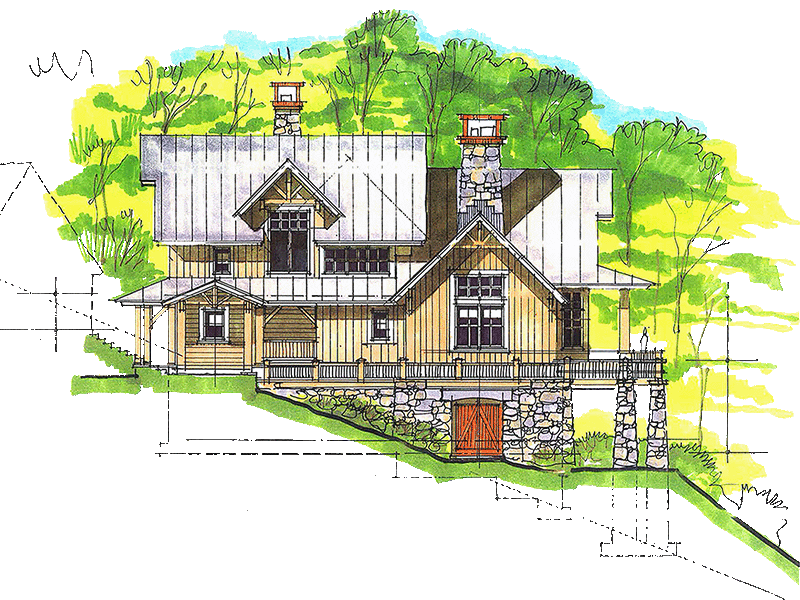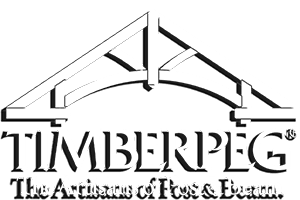Our Process

Building a home requires a lot of work from everyone involved–owners, manufacturers, and craftsmen alike. As the planning and building of your new home evolves, each of the parties involved will have many different and interrelated responsibilities.
The following section is a simplified outline of the basic steps and responsibilities for you, Timberpeg®, your local Timberpeg Representative, and your contractor. When you actually plan and build your home, some of these stages will overlap, and you can expect to have several opportunities to interact with everyone involved. This outline should give you a good idea of the general sequence of events.
Please note, the order and duration of the following stages may vary, depending on build site, code requirements, and/or your own individual project needs.
Our Process
Building a home requires a lot of work from everyone involved–owners, manufacturers, and craftsmen alike. As the planning and building of your new home evolves, each of the parties involved will have many different and interrelated responsibilities.
The following section is a simplified outline of the basic steps and responsibilities for you, Timberpeg®, your local Timberpeg Representative, and your contractor. When you actually plan and build your home, some of these stages will overlap, and you can expect to have several opportunities to interact with everyone involved. This outline should give you a good idea of the general sequence of events.
Please note, the order and duration of the following stages may vary, depending on build site, code requirements, and/or your own individual project needs.

stage 1
research
start planning
Once you have established your build site, you can begin to envision what style timber frame home would best suit you and the property. For inspiration and ideas, peruse the different projects featured on our site, many of which include not only photos, but floor plans. You can also take 3D virtual tours of some of our projects.
Next, gather all your ideas and meet with your Timberpeg Representative. This individual may be a Regional Manager or a local Independent Representative. Many of our Independent Representatives are builders or designers, however, in every case they are there to help answer questions and guide you through the process of building your Timberpeg home. You can find your local representative through our “Where We Build” page. Together, you can discuss your budget, needs, and desires for your new home.
stage 2
design
rough plans
If your design is based on an existing Timberpeg plan with minimal changes, or if you have a layout in mind, your Timberpeg representative may work with you to sketch some rough plans. If more complicated changes are required your representative may work with our in-house design team or you may choose to work with a local design professional (sometimes your Timberpeg Independent Representative) to provide a higher level of customization.
DESIGN DEPOSIT
You can retain the services of the Timberpeg Design Department by placing a $4,500 design deposit, which will be applied to the price of your home when you sign a Timberpeg contract. Design deposits may be more for particularly complex custom designs or commercial buildings.
DESIGN REVIEW
The Timberpeg design department creates a home design to meet all your hopes, needs, and specification. You and your Timberpeg Representative will continue to work with our Design Department to make any needed refinements.
Once you receive and approve your home plans, your Timberpeg Representative will review the plans and what is included in your Timberpeg package with you. While Timberpeg has a typical package, each project is unique and you may decide that certain materials or services are or are not needed to complete your home. a higher level of customization.
stage 3
you & your builder
BIDS/Selecting a Builder
It is your responsibility to hire a contractor to construct your home. You may already have your own builder, but if not, your Timberpeg Representative can introduce you to multiple qualified builders and may in fact be a builder themselves. You or your Timberpeg Representative can send your home plans and the Timberpeg Specification Checklist to contractors for bids.
permitting
Building codes and requirements vary across the country and may even differ not just state-to-state, but also by region. Depending upon where your build site is located, your contractor will need to secure all required building permits. Further, you will need to arrange any necessary financing needed to complete the project.
site prep
Your contractor begins site preparation, including water/sewer, and foundation work. Your Timberpeg Representative will work with your contractor to coordinate timetables and prepare for delivery of the Timberpeg materials.
stage 4
contract & plans
contract timeline
Once you accept the preliminary design, it is time to sign a contract and remit 10% of the package price.
At this point, Timberpeg will prepare the final frame plans for your contractor. Sixty to ninety days prior to delivery of the package, you will be required to remit an additional 40% payment (bringing your total down-payment to 50%). Then we may assign a delivery date range of time.
full set of plans
Upon approval of the final floor plan and timber frame design the Design group, using Cadwork® software, also creates a computer generated 3D model of the frame. From this 3D model, the software then enables us to extract a 2D frame drawing and the coding that can be fed into our Hundegger® automated joinery machine.
The end result is an accurately cut timber frame and a comprehensive set of final drawings to fabricate your timber frame. Your contractor will also use these drawings to assemble your new home.
*stamped plans
In jurisdictions where stamped plan are required, our design group will provide the needed timber frame structural services. A local engineer may be consulted if necessary.
stage 5
production
precision cutting
It is at this point that the crafting of your timber frame begins at our production facility. Timberpeg® timber frames are cut in Claremont, New Hampshire. At the heart of our factory is a Hundegger CNC cutting machine, capable of very fast and precise cutting.
timber marking
This machine is capable of most joinery cuts, but hand finishing is often required. This is done by experienced craftsmen who take pride in their work. Once the frame is cut, it is bundled and wrapped with protective paper, and placed on flatbed trucks for delivery. Other essential materials are also carefully bundled and included on the truck, while items such as windows and doors are directly shipped. Great care is taken to minimize the number of truckloads required for each project.
The timbers are planed on all sides before being cut by the Hundegger. Our craftsmen will individually mark each tenon piece and its corresponding mortise piece with a part number for easy, on-site assembly.
hand crafting
We also have an incredible staff of craftsmen who inspect each piece of timber. In some cases, these will be cut and finished by hand. Such work may include, but is not limited to, adzing to create a rustic texture, hand boring holes for pegs and chiseling pockets to achieve a perfect fit.
pre-assembly
After the initial CNC cutting and hand work is completed, trusses and braces are pre-assembled in our shop to ensure a perfect fit. At this point, minor adjustments are made and finish sanding is done. The extra attention to detail on our end speeds up assembly time and reduces material waste on the job site.
custom pre-stain
Typically, your timbers are delivered to your site cut, sanded, and ready for your contractor to finish. This allows time for the wood to air dry during transit and lets you and/or your contractor to visually match the finish from piece to piece during construction.
However, there are also situations that may call for components to be pre-stained before leaving our shop. When the need arises and if scheduling allows, we are happy to offer our customers custom pre-stain service. When requested, No-VOC and Lo-VOC products are available. Ask your Timberpeg Independent Representative for more information.
stage 6
packing & delivery
careful & efficient packing
Once production is complete, you will make your final payment (remaining 50%) to Timberpeg and the package is prepared for transport.
All frame components are bundled and wrapped with protective paper and placed on flatbed trucks for delivery. The siding, trim, and roofing materials are carefully bundled and included on the truck. Great care is taken to minimize the number of truckloads required for each project.
transport
Your package is then delivered to your site by an insured independent transport company. Often, the fees for delivery are included in the package costs, but on occasion there may be a separate fee.
delivery & check-in
If you are working with one of our Independent Representatives, they will be on site to help verify that everything was shipped and delivered as specified. If you are working directly with one of our Regional Managers, they may be on site during delivery. However, as each project is different with its own unique circumstances, in some cases it may be more efficient for the Regional Manager to work with you, your builder, or your on site project manager to develop the best plan for delivery.
stage 7
construction
frame raising
Once your package is delivered, all components should be sorted and inventoried. Since the timbers were pre-fit and marked before leaving our facility, erecting the frame is generally a quick and easy process for an experienced crew.
Most modern-day timber frames are raised with the help of crane. This makes for a safer job site, reduces labor, and saves time–which saves you money!
ENCLOSURE
Upon completion of the frame, tongue and groove wall, ceiling, and floor decking is installed. A cost-efficient method of construction; it saves both labor and material, as the decking is the floor of the upper level, as well as the ceiling of the lower level.
S.I.P. INSTALLATION
For the wall assembly, the drywall and felt paper are provided by others, but the remaining 6.5 inch SIPs are part of the standard wall assembly. This provides a minimum insulation value of R-23, and thicker panels can be used if more insulation is desirable. Timberpeg also provides the drainage plane material, exterior siding and trim, as well as top-quality windows as part of the package.
dried-in shell
The components we provide include virtually everything necessary for the exterior shell of the building. When these materials are assembled, the building appears finished on the outside. All windows, doors, and roof windows are installed, the building is fully insulated and the interior surfaces of all exterior walls and ceilings are completely finished.
stage 8
make yourself at home
MOVE-IN DAY
The day you’ve been waiting for has finally arrived. Your home is finished and all that’s left to do is move in and throw a big party to celebrate. Enjoy!
